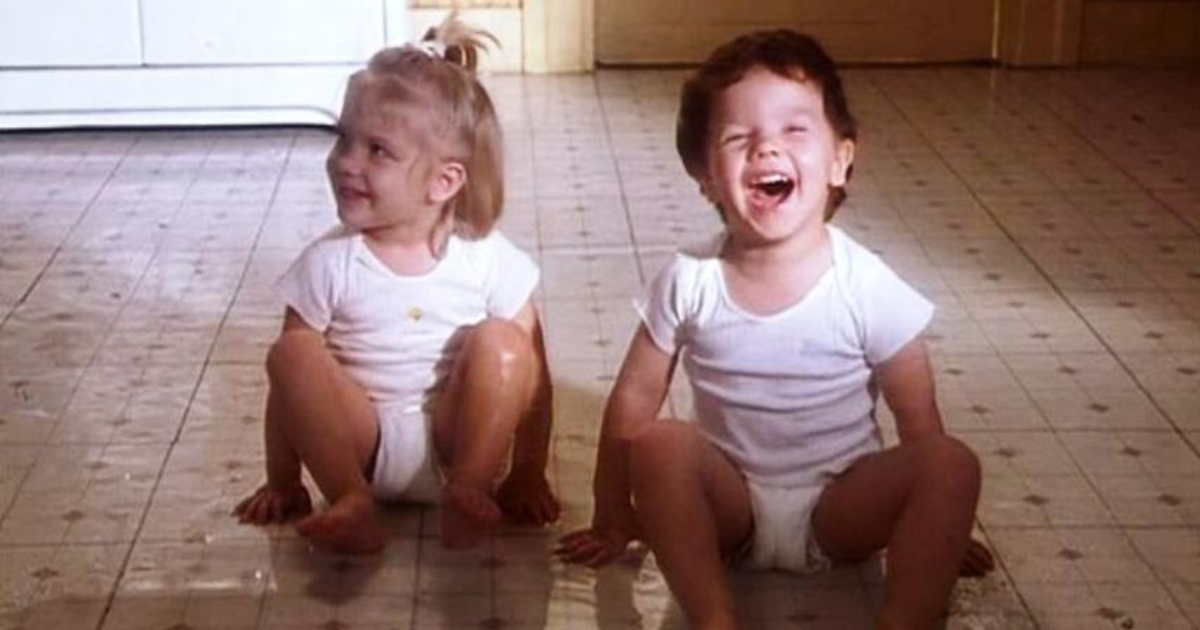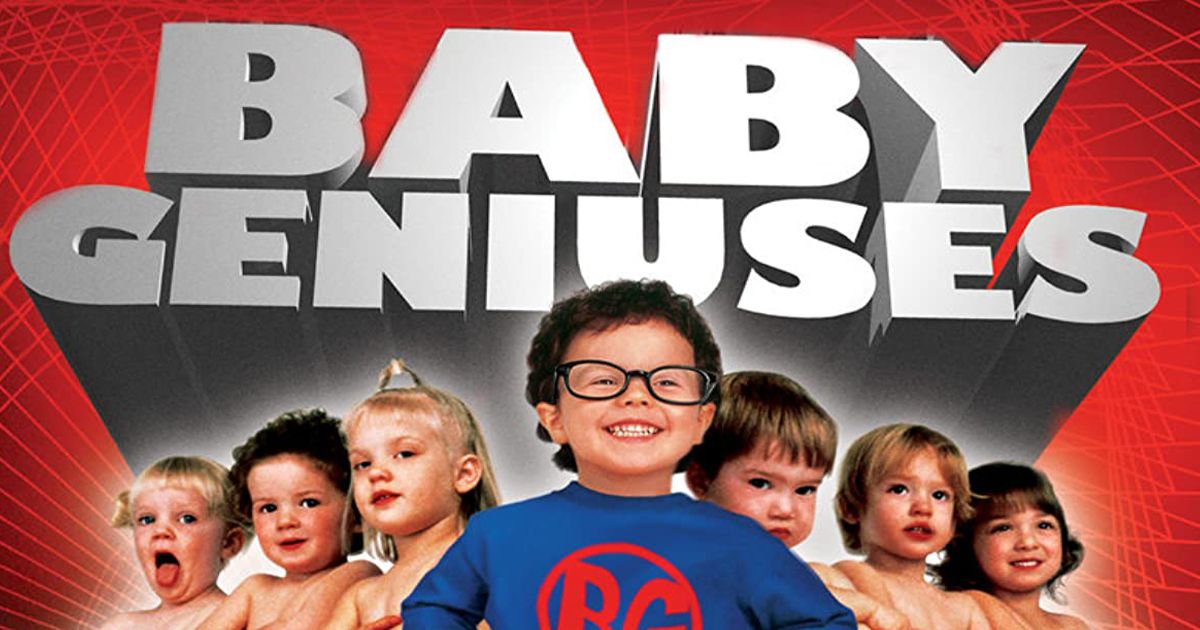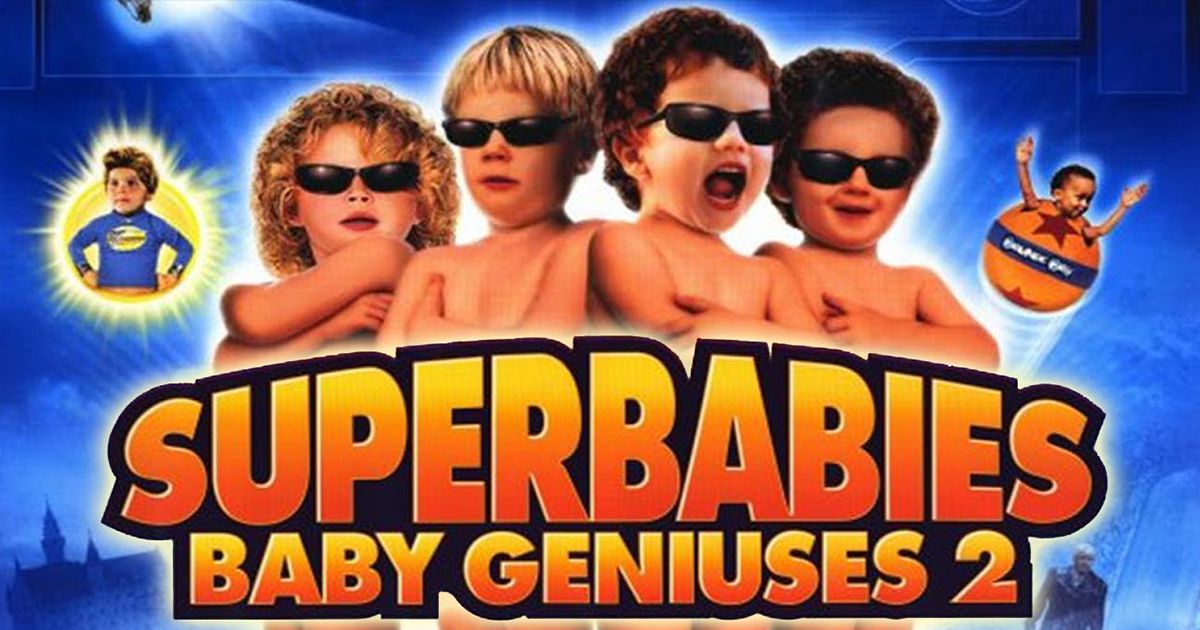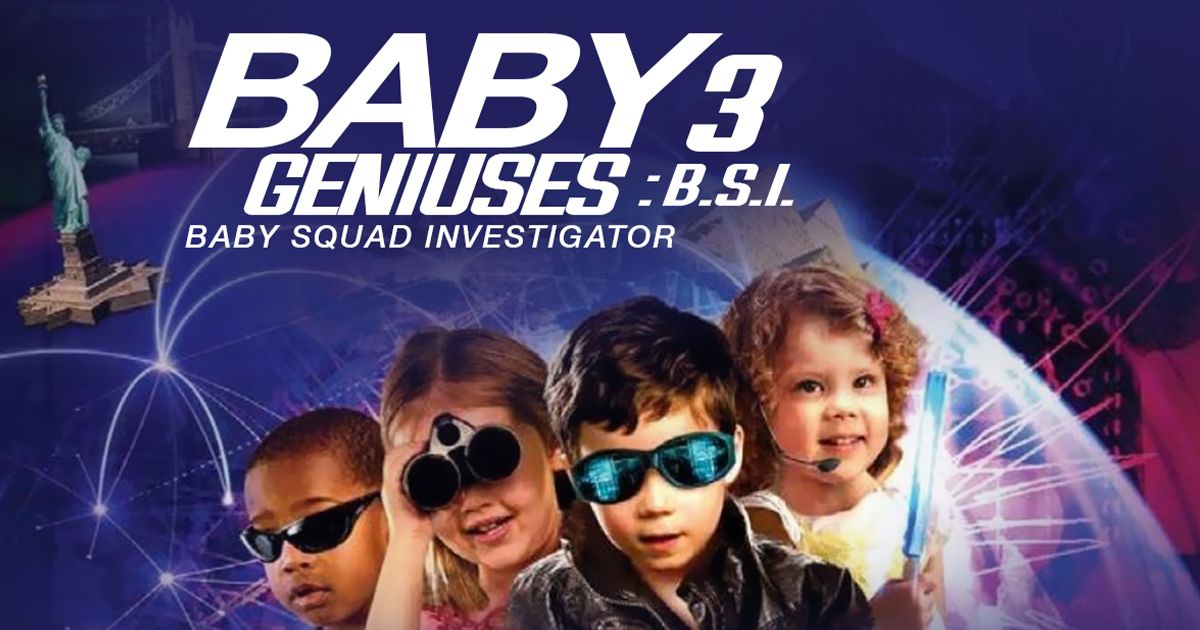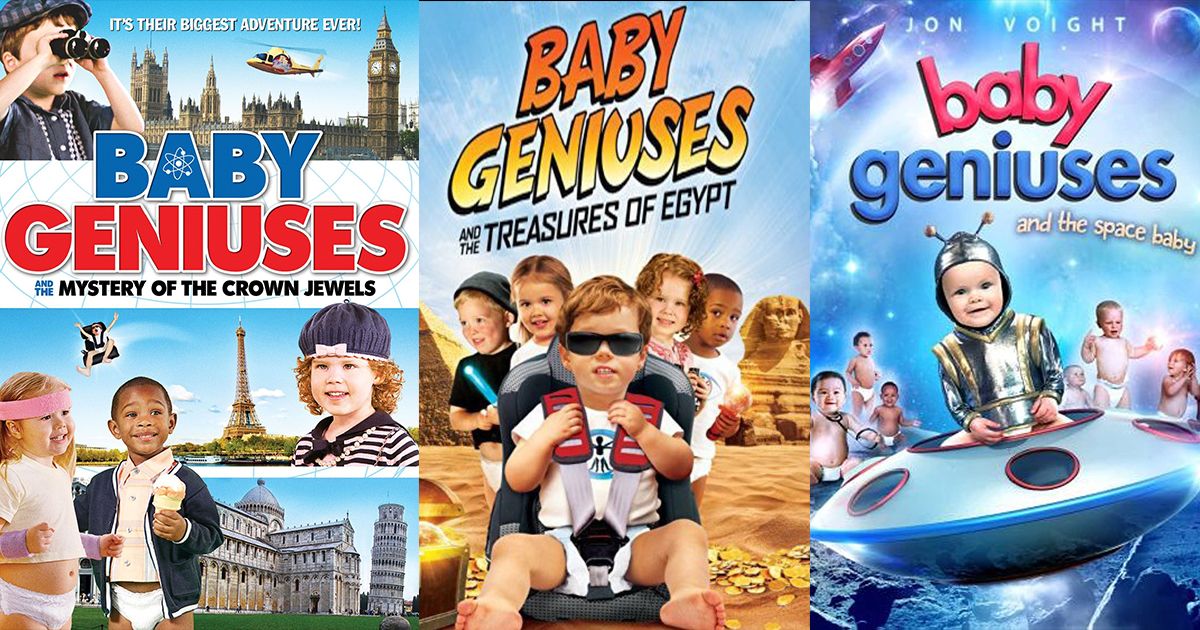The year is 1993. Steven Paul, a semi-successful film producer at this point, was shopping at a Barney’s clothing store when he watched a man enter with his one-year-old baby. Nearby, another couple was shopping, and they too, had a baby. The kids naturally gravitated towards one another, and Paul watched as they began “talking.” Their words were pure gibberish, but to Paul’s amazement, it looked as though the babies understood each other.
This otherwise inconsequential moment planted a seed in Paul’s mind, and over the next four years it morphed into an idea for a legitimately boundary-pushing film; one that would require advanced - and untested - CGI technology. Paul genuinely questioned whether he could bring his vision to life, but he never gave up. His persistence paid off in 1999, when his groundbreaking idea was finally released into theaters. This is the story of Baby Geniuses.
The Making of Baby Geniuses
Steven Paul was the founder of Crystal Sky Pictures, a production company that he ran alongside actor Jon Voight. The two of them approached director Bob Clark - the man behind such hit films as Porky’s and and A Christmas Story - and pitched their “intelligent baby” movie. The original script was much more “fanciful,” and involved babies discovering a hole in the ground that leads them to Baby World, a place inhabited solely by - you guessed it - babies.
Clark initially passed on the idea, until he was shown a “proof of concept” trailer. The one-minute teaser featured babies sitting around a conference room table holding a studio production meeting, discussing budgets and development deals. Digital animation and voice-overs were used to “morph” the babies mouths to make them appear like they were talking. Believe it or not, this was pretty far-out technology for the time; “mouth-morphing” was used before in movies like Babe, but never used on people, let alone babies.
Regardless, this proof-of-concept not only convinced Bob Clark to sign on, but also David Saunders, the president of Sony’s Triumph Films. The film was officially greenlit in 1996.
Bob Clark ditched the film’s original “fairytale” angle and rewrote the entire script; despite this being a movie meant for children, Clark decided to go with a “corporate intrigue angle” to make this movie about talking babies more realistic.
His new iteration of the story followed Dr. Elena Kinder and Dr. Heep (played by Kathleen Turner and Christopher Lloyd, respectively), two scientists who run a secret laboratory dedicated to “genius-baby” studies. They experiment on orphaned infants in an attempt to decipher their impossible-to-translate “baby talk,” which they believe holds vast, universal knowledge. Time is of the essence, however, as babies lose this knowledge when they “cross-over” and learn actual words.
After the studio executives signed off on Clark’s “more realistic” script, the casting process began. Bob Clark and “baby wrangler” Jim Wagner (yes, that was his professional title) held auditions across six major cities. Most babies, they discovered, just weren’t cut out for the glitz and glamour of Hollywood; they would crumble under the stress of acting when separated from their parents. “We wanted highly intelligent, achievement-oriented babies,” recalled Clark.
When things started to look hopeless, Clark and Wagner met the Fitzgerald Triplets - Myles, Leo, and Gerry. Although these boys were three - a little old for the roles - they still looked like babies. So they were cast as the two leads, Sylvester and Whit, a genius pair of twins who were separated at birth.
Since child labor laws only allowed toddlers to work three hours at a time, all the baby geniuses were played by either twins or triplets; when one baby was forced to clock out, their brother or sister stepped in to replace them. At any given point during the 50-day shoot, there were dozens of babies on set. In some scenes, there were more than 60 babies on camera - more per capita than any movie made before or since. To say it was an arduous shoot would be an understatement. Actors are difficult, but baby actors are far, far more demanding and unpredictable. Frequent diaper changes and milk breaks were required.
When it came to film’s many high-wire stunts, Mr. Clark relied primarily on two people: a 15-year-old little person and an 8-year-old star gymnast. They would perform the stunts in latex baby-face masks, which undoubtedly was the source of nightmares for a number of babies and crew members on set.
Eventually shooting wrapped, and arguably the trickiest part of the process began: the digital effects work. The success of the movie depended on the believability of the “morphing” technology the VFX team were going to use to make the babies “talk” and move. There was also the question of who would voice the children. Clark originally flirted with the idea of casting adults, but ultimately decided against it and cast young children instead. (One can only imagine the disquieting horror of a CGI baby voiced by John Malkovich).
Although the film was originally set to open during the 1997 Christmas season, the intricate VFX work delayed the film until March 1999. Unfortunately, the film didn’t land with critics or audience members. And that’s putting it kindly; it seemed as though critics were in competition to come up with the wittiest (and cruelest) critiques.
Nathan Rabin over at AV Club called Baby Geniuses a “horrible, horrible film that wears out its welcome before its opening credits.” Roger Ebert was disturbed by the mouth-morphing, saying: “babies are cute only when they’re being babies. When they’re presented as miniature adults…there is something so fundamentally wrong that our human instincts cry out in protest.” But none were as harsh as Liam Lacey of The Globe and Mail, who found the movie “as endearing as unanesthetized gum surgery.”
Despite its less-than-kind reception, the $12 million movie would go on to make $36 million at the box office, tripling its budget costs and becoming the tenth highest-grossing PG movie of 1999. And even though critics and audience members loathed the movie (the audience score on RT currently sits at 25%), the movie’s success at both the box office and on home video led to a sequel that nobody asked for.
Superbabies: Baby Geniuses 2
Bob Clark returned to direct, with Steven Paul serving again as the film’s executive producer. If their goal was to make a weirder, if not better, sequel, then they succeeded with flying colors.
Superbabies: Baby Geniuses 2 introduces a new cast of baby heroes, led by the “charismatic” Archie. In the film’s opening scene, Archie regales his fellow toddler compatriots with a story of his distant relative, an immortal German “super baby” with a very Hawaiian name: Kahuna. According to Archie, Kahuna is not only a super baby, but also a hero; 50 years earlier in 1962, Kahuna rescued a bunch of imprisoned toddlers from a brutal East Berlin orphanage run by guards who are, essentially, Nazis. After his daring rescue, Kahuna disappeared off the face of the earth, never to be seen or heard from again.
Trouble soon rears its ugly head when media mogul Bill Biscane - played by executive producer Jon Voight - takes over Archie's daycare center under the guise of filming a television show. But unbeknownst to them, Biscane is actually Kane, former head of the aforementioned Nazi orphanage, and he plans to use their daycare as part of a convoluted plot to brainwash babies around the globe. (To really get in character, Jon Voight based Bill / Kane’s performance on Josef Mengele, the infamous Nazi doctor that performed horrible experiments on prisoners in concentration camps.)
Through a series of events, Kahuna comes out of hiding and rescues the innocent babies from the Kane-controlled daycare. And in a twist that rivals Empire Strikes Back, Kahuna reveals that Kane is actually his brother.
Their father was a scientist, who created a “super potion” that Kahuna accidently drank when he was a toddler, which turned him into an immortal “super baby.” While Kane grew up, Kahuna remained a baby permanently. When their father died, Kane imprisoned his adult-toddler brother in one of his Nazi-occupied orphanages until he was eventually able to escape.
Now, Kahuna’s inexplicably bleak backstory because it means he witnessed the rise of Nazi Germany, the advent of World War II, the fall of the Berlin Wall, and the death of his father. Add to the pile that his own brother desperately wants him dead. Furthermore, even though Kahuna is a toddler, physically speaking, his brain has evolved normally, meaning Kahuna is a 70-year-old man trapped in a 3-year-old’s body. The existential and unequivocal horror of such a devastating fate is never - not once - addressed. Perhaps Superbabies is not the right film to explore such hard-hitting philosophical quandaries.
The remainder of the movie plays out how you might expect: Archie and his baby friends are transformed into “super babies” by Kahuna (whether they, too, will forever be trapped in their baby bodies is never addressed, and clearly not a concern for Kahuna). The five babies then team up and eventually save the day from Kane’s unclear but obviously very dangerous plan.
When Superbabies: Baby Geniuses 2 was released in 2004, critical reception was far worse than anything said about the first film. Joanne Kaufman of the Wall Street Journal called the movie “unspeakably ghastly.” Marjorie Baumgarten of the Austin Chronicle equated the film to “child abuse.” Most reviews seemed to agree; Superbabies is both a terrible comedy, and a waking nightmare of unmitigated proportions.
Audiences didn’t take too kindly to it, either. The film was a box-office disaster, grossing just under $10 million against a $20 million budget. It currently sits near the top of IMDB’s “Bottom 100” list of the worst movies of all time, and holds a very-rare 0% on Rotten Tomatoes, somehow beating its predecessor’s 2%.
Despite the savage criticisms and awful box-office reception, the producers greenlit another project set in the Baby Geniuses universe. Only this time, they decided to bring their baby horror show to the small screen.
Baby Geniuses 3: BSI (Baby Squad Investigators)
Baby Geniuses 3: BSI follows the adventures of other highly-intelligent babies as they solve intriguing global mysteries and battle their two arch-enemies: Big Baby and his father, Beauregard Burger. Jon Voight also returns as the show’s mysterious, overarching villain Moriarty. (His previous character, Kane, was turned into a baby at the end of Superbabies).
The show was filmed with a 2010 North American release in mind, but the series was ultimately shelved (though it did premiere in Italy and the Middle East). And unlike the first two movies, BSI is the first entry in this now-franchise that ditches the “mouth morph technology” in favor of old-fashioned dubbing.
Although the show never aired in the states, the producers were able to salvage it and re-purpose it as three separate direct-to-video movies not unlike the Air Bud franchise. They were Baby Geniuses and the Mystery of the Crown Jewels (2013), Baby Geniuses and the Treasures of Egypt (2014), and last but certainly not least, Baby Geniuses and the Space Baby (2015). Considering these films were not released theatrically, they were spared the critical scalding that befell the first two films. Or maybe no one cared anymore, considering these “films” were being released 15 years after the original.
The End…?
For the betterment of children and parents around the world, the last three Baby Geniuses movies have faded into obscurity. The producers recognized the error of their ways (read: the films stopped making money) and decided it was best to step away from this all-but-cursed franchise.
In many ways, Baby Geniuses is a confounding blip in Hollywood history. The first film was a woefully misguided passion project that resulted in a far worse sequel, which was followed by a re-purposed direct-to-video trilogy. These movies never really made money, not significant sums anyway. So the question remains: why were they made?
For now, it seems like Baby Geniuses will remain a weird Hollywood anomaly. But in a landscape filled with sequels, prequels, reboots, remakes, and competitive streaming services always looking for new content, there’s always a chance that these babies may return in the near future.

